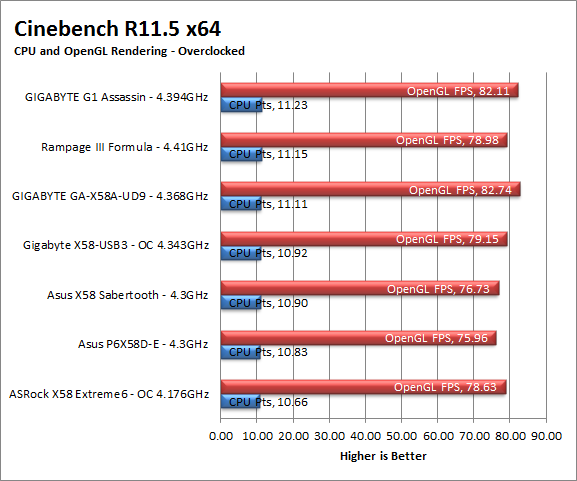Section II - Performance Tests, Synthetic
In this section of testing we cover the synthetics. These are tests that run a scripted sequence of internal APIs or that use another installed application to perform a series of scripted events. They are great in that they can provide reproducible results across various platforms. On the down side, synthetic tests can be fooled with driver tweaks and optimizations. In some cases it is necessary to rename the .exe file to something generic to discover if this is the case. In any event when this is needed (when a test shows a drastic difference in performance over the renamed exe) we will note this and show both results for comparison.
PCMark Vantage -
PCMark Vantage is a suite of tests designed to test the power of your computer. It runs task that range from productivity to gaming (DX9 only). It is a great test to identify potential problem areas with general performance on a system. It can also show how well a single component can increase or decrease system-wide performance. We run both the x86 and x64 PCMark Suites for testing.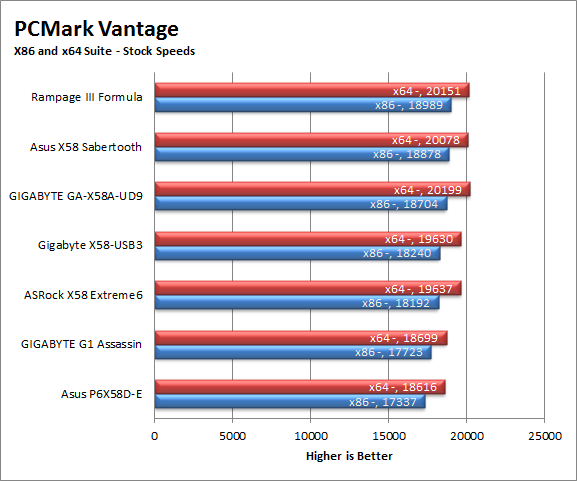
Once again the X58-USB3 is right in the middle of the pack. We find it performing well for the price range but I would like to have seen a little higher. Of course we have to consider the delta here. From top to bottom the x86 scale is only 1652 points. That is really not that much in the grand scheme of things. We do get a little bit of a better return when the system is overclocked but I have a feeling that most of this is from the increased memory performance than anything else. If that is so, we can expect that Gigabyte can fix this issue with a minor BIOS tweak.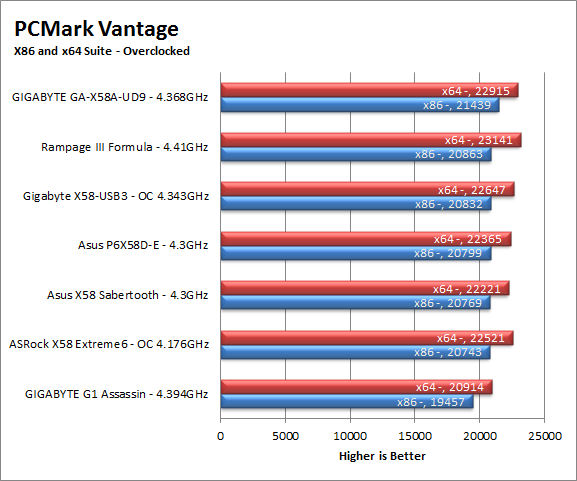
3DMark 11 -
3DMark 11 is the latest GPU benchmark from FutureMark. This test simulates the typical tasks that a GPU (and system) would have to perform to provide you with a good gaming experience. It is based on the DX9, DX10 and DX11 engines but can only be installed on Windows Vista or later (Windows Vista only with a DX update). The suite of tests covers DX9 rendering, DX10 rendering, AI computations and PhysX. Unlike 3DMark Vantage, 3DMark11 uses a CPU based Physics engine that removes the advantage that nVidia had.
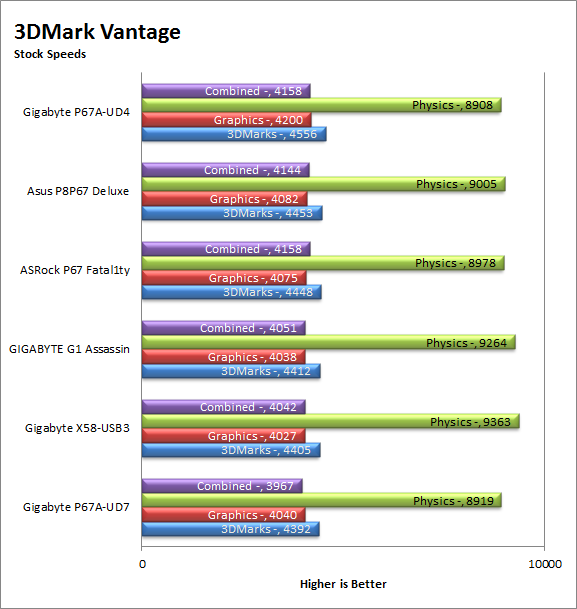
With a short range delta of only 191 3DMarks we really have a hard time calling a “winner” here. We will say that all of these boards will handle 3DMark 11 fairly well with the CPU, Memory and GPU we use. We cannot call this for any other combination really. But we have a feeling that the X58-UD3 would make a capable gaming board with most mid-range to high-end GPUs and CPUs.

HyperPi 0.99b -
HyperPi is a front end application that allows you to easily run multiple instances of the SuperPi application. SuperPi, for those that are not familiar with it, is an application that measures the time it takes to calculate the number Pi out to as many as 32 million places. This calculation is then checked and run multiple times (up to 24 for a 32M run). This test stresses the CPU, Memory and HDD as data is handed off between the three. If there is a weak link, HyperPi will show it. For our testing we run the 32M test on as many cores (and threads) as the CPU has available. The slowest CPU time is then recorded.
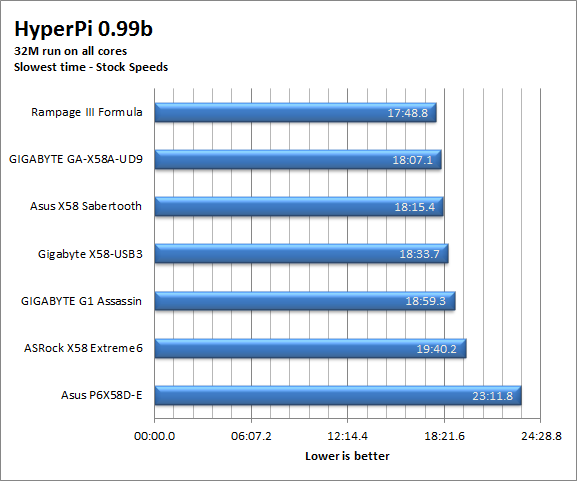
For hard number crunching the X58-USB3 is about average. It can handle the job but it is not going to be at the top of the game. We expect this to spill over into other tests like Lightwave 3D, Cinebench and anything else that requires the CPU to handle calculations across all cores.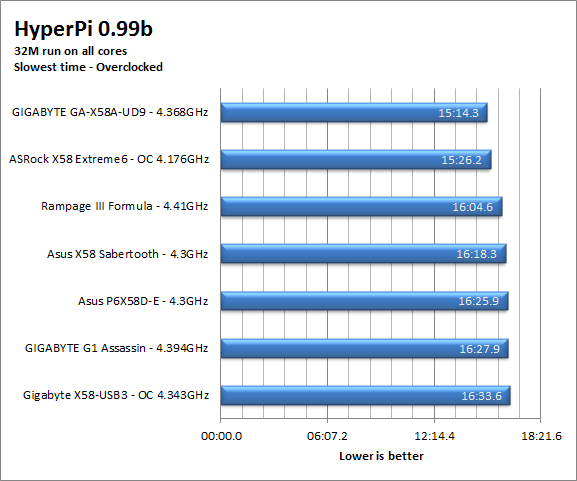
Cinebench R11.5 -
Cinenbench R11.5 is the 11th release of Moxon’s rendering test. This test is based off of the Cinema 4D engine, which is one of the industry standard tools for digital animation. It is a powerful product with many different modules that can be “plugged” into it to increase its effectiveness. With Cinebench you get to see how your computer would do using this application. There are two tests; one tests the CPU’s ability to render an image across multiple cores or threads. The other tests your systems ability to handle OpenGL based rendering.
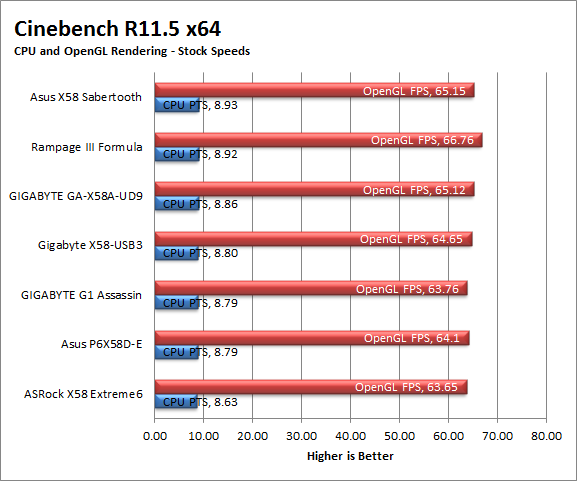
Here we have another benchmark that is difficult to call a winner on. For the most part any X58 + Core i7 CPU is going to well with this test. After all the more cores you have (even logical ones)
